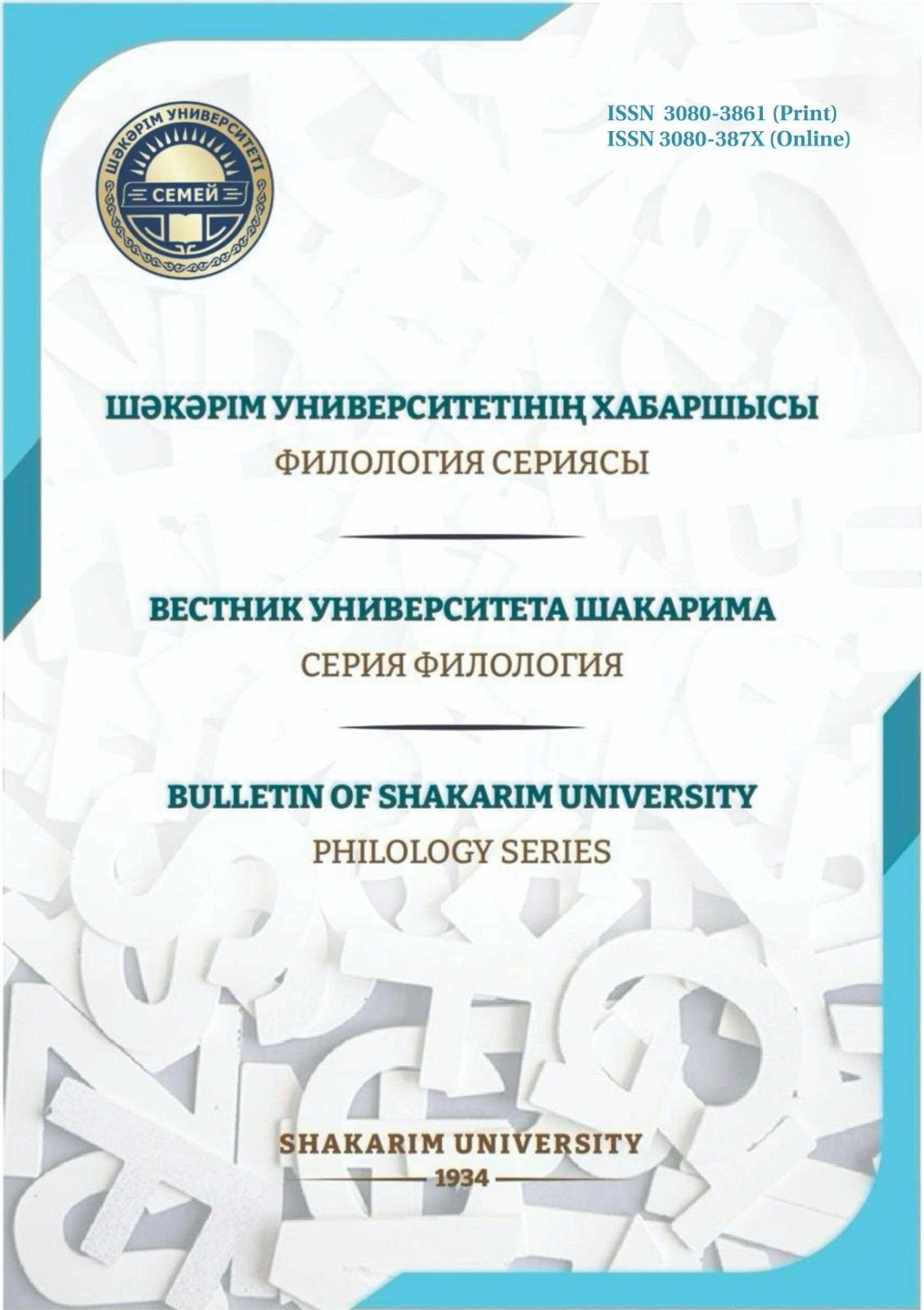PECULIARITIES OF REPRESENTING ARABIC AND PERSIAN LOANWORDS IN DICTIONARIES
Keywords:
historical lexicography, borrowed vocabulary, Arabic-Persian elements, etymology, de-etymologization, historical dictionary, written monuments, semantic dynamics, phonetic principle, morphological analysis.Abstract
This article provides a comprehensive examination of the place and role of Arabic and Persian elements in the historical lexicography of the Kazakh language. The study, based on the analysis of historical, etymological, and dialectological dictionaries, considers in detail the phonetic, morphological, and semantic characteristics of borrowed vocabulary. Particular attention is paid to the works of L.Z. Budagov (Comparative Dictionary of Turkic-Tatar Dialects) and R. Syzdykova, which reveal the peculiarities of the functioning of loanwords in ancient written monuments.
The article demonstrates the historical significance of Arabic-Persian elements, the ways of their penetration into the Kazakh language, as well as the process of de-etymologization that they underwent over time. Through specific examples (Jamiʿ al-Tawarikh, Türik Shajara, and epic works of the batyr cycle), the semantic dynamics of borrowed words are traced along with their contemporary meanings in the Kazakh language. Issues of graphic variability and orthographic instability in the medieval writing tradition are also discussed. The findings can serve as a theoretical basis for compiling a historical dictionary of the Kazakh language, for identifying the intrinsic nature of borrowed elements, and for determining their place within the system of lexicography.
Downloads
Published
Issue
Section
License
Copyright (c) 2025 The editorial staff of the journal follows the copyright law of the Republic of Kazakhstan and relevant international agreements. The authors retain their copyright and provide the journal «Bulletin of Shakarim University. Series of Historical Sciences» right of first publication of the manuscript. The author has the right to copy and distribute the material in any medium and in any format, subject to appropriate reference to the journal. Readers and users can freely copy, distribute and adapt the material, provided that the author of the work is indicated and a link to this journal is provided. Copyright presupposes the integrity and responsibility of each co-author who made a significant contribution to the writing of the article. The author has the right to store his publications in an institutional or other repository of his choice, provided he provides the appropriate link to the journal’s website.

This work is licensed under a Creative Commons Attribution-NonCommercial 4.0 International License.
Copyright presupposes the integrity and responsibility of each co-author who made a significant contribution to the writing of the article.
The author has the right to store his publications in an institutional or other repository of his choice, provided he provides the appropriate link to the journal’s website.

